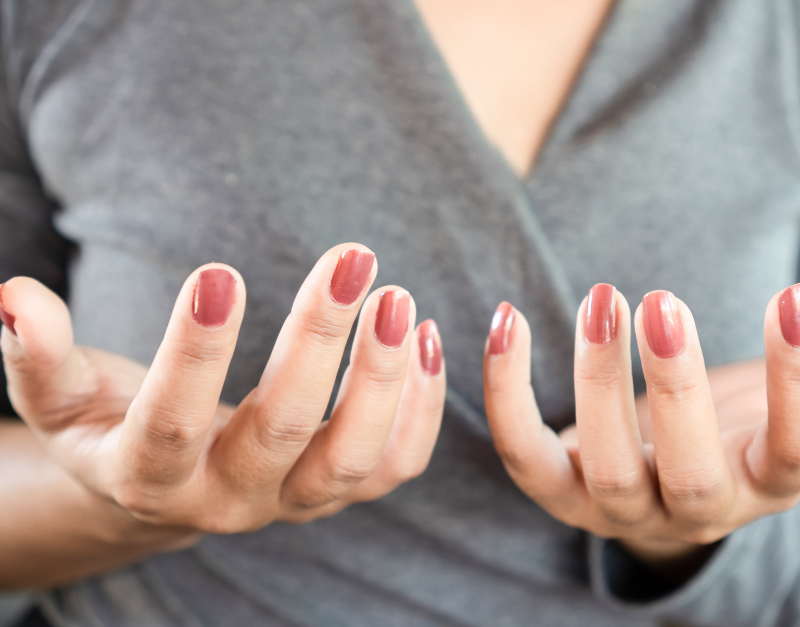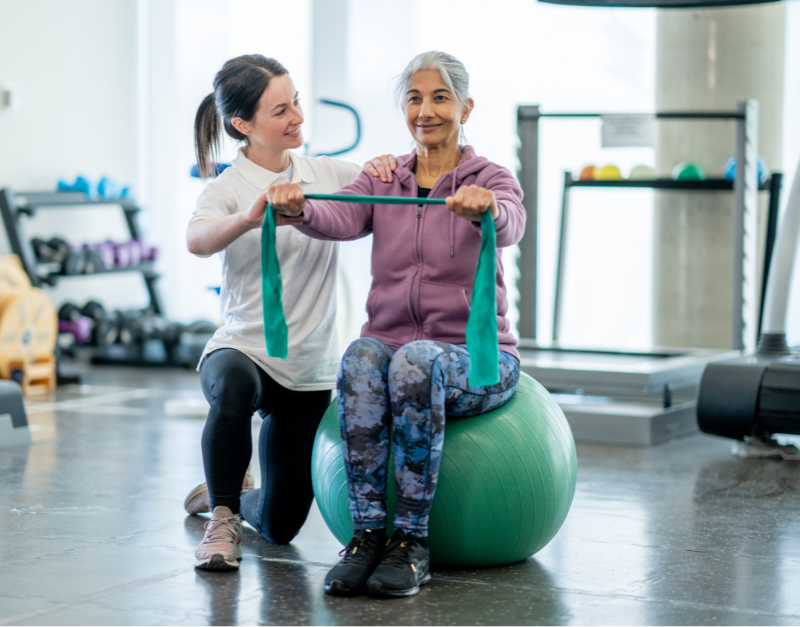
Quality Treatment With Super Affordable Price
Best Physiotherapy Treatment India
Call us anytime
Write a mail

There are times when the threads of our bodies’ delicate tapestry tear, and we experience an unexplainable sense of numbness and tingling. These strange prickles may dance down our limbs or remain, requiring our attention. What is the source of this enigmatic occurrence, and how can we unravel the network of causes, hazards, and solutions? Let us take a voyage through the terrain of numbness and tingling, investigating its many causes and revealing the preventative measures and therapies that may help us regain our balance. Understanding the Puzzle of Numbness And Tingling : Numbness and tingling are mysterious feelings that can occur anywhere in the body, from the tips of our toes to the tips of our fingers. We frequently experience these emotions when we sit with our legs crossed or succumb to the brief immobility of a sleeping arm. When these symptoms continue without a clear explanation, they may indicate an underlying illness such as multiple sclerosis or carpal tunnel syndrome. Causes of Numbness and Tingling: The many causes of numbness and tingling weave a complicated tapestry, with ordinary activities as well as unanticipated situations contributing to the experience. Consider the following possibilities: Numbness And Tingling Risk Factors: Certain risk factors make people more prone to chronic numbness and tingling. These elements are as follows: Preventive Measures: While the reasons for numbness and tingling vary, adopting good lifestyle practices can help avoid them. Consider the following precautions: When to Seek Medical Attention: While numbness and tingling are normal, certain symptoms require rapid medical treatment. Seek immediate medical attention if you have any of the following symptoms: Numbness And Tingling Treatment Overview: To address chronic numbness and tingling, a thorough strategy is required. Expect your doctor to perform a thorough assessment and to request appropriate testing. Blood tests, imaging examinations, and nerve conduction studies are examples of these. Depending on the diagnosis, medications such as gabapentin, pregabalin, and amitriptyline may be recommended. Numbness And Tingling Physiotherapy Treatment Near Me: Physiotherapy treatment at affordable cost emerges as an important factor in the fight against numbness and tingling. A physiotherapist will do a thorough examination, using methods such as electromyography to confirm nerve damage. Treatment options may include: Numbness and tingling are simply transitory notes in the symphony of our physiological senses, occasionally warning us of deeper abnormalities. We may restore balance to our bodily well-being by unravelling the secrets of these feelings, identifying their origins and hazards, and embracing preventative actions and therapies. So, equipped with information, let us go on this trip to navigate the complicated paths of our bodies and recapture the rhythm of vitality. This holistic examination, in collaboration with Gold Medal Physiotherapy, uncovers the complexity of numbness and tingling, providing a route to restore vitality via full understanding and effective therapies. Frequently Asked Questions What causes numbness and tingling sensations? Numbness and tingling feelings can be caused by one or more of the following factors: What is the best way to cure tingling and numbness? Among the potential treatments for tingling and numbness are: Is physical therapy effective for numbness and tingling? Physical therapy has been shown to be an effective treatment for numbness and tingling symptoms. Physical therapy can give comfort by combining stretching and strengthening exercises with other physiotherapy treatments such as massage or electrical stimulation. What is the normal timeline for noticing improvements in numbness and tingling feeling relief with physical therapy? The period of recovery from numbness and tingling might range from a few days to many weeks, depending on the underlying source of the symptoms. Which forms of physical therapy can help with numbness and tingling? Aerobic activities, stretching exercises, strengthening exercises, massage treatment, and electric stimulation are all effective physical rehabilitation approaches. TENS treatment, a common physiotherapy method, is effective in reducing numbness and tingling.

According to the World Health Organisation (WHO), this inflammatory illness of the lungs poses a severe danger to public health, claiming roughly 2 million lives each year. As we observe this day, it is critical to investigate the entire strategy necessary to battle pneumonia, particularly emphasizing the often-overlooked function of physiotherapy. Understanding Pneumonia: A Global Health Concern Pneumonia is caused by bacteria, viruses, or fungi and is characterized by inflammation of the air sacs in the lungs. Coughing, trouble breathing, fever, and chest discomfort are some symptoms. The shocking fatality rate connected with pneumonia emphasizes the disease’s crucial significance as a worldwide health problem. Physiotherapy: An Integral Component of Pneumonia Management Physiotherapy emerges as an unsung hero in the fight against pneumonia, providing a holistic approach to prevention, care, and rehabilitation. While pharmacological therapies such as antibiotics and vaccinations are critical, physiotherapy supplements these treatments by treating the disease’s physical consequences and fostering healthy respiratory function. Respiratory Exercises and Breathing Techniques: Unlocking Lung Capacity Through various respiratory exercises and breathing methods, physiotherapists play a critical role in increasing lung capacity and improving ventilation. These exercises help clear airway secretions and reduce lung problems, allowing for a faster recovery. Patients with pneumonia frequently have shallow breathing patterns, which physiotherapists work hard to address, ensuring effective engagement of respiratory muscles. Chest Physiotherapy: Mobilizing Healing Manual methods are used in chest physiotherapy to remove mucus and promote productive coughing. This is especially advantageous for people with pneumonia when secretions can build up in the lungs. Physiotherapists mobilize and evacuate these fluids using tapping, percussion, and vibration, lowering the risk of problems and speeding up the healing process. Posture and Mobility: Foundations of Recovery Individuals recuperating from pneumonia must maintain an ideal posture. Physiotherapists evaluate and recommend exercises that improve posture, prevent respiratory strain, and improve lung function. Furthermore, increasing movement is critical to avoiding problems such as pneumonia-related weakness and ensuring people regain strength and independence. Patient Education: Empowering Individuals for Self-Management Physiotherapy goes beyond hands-on interventions to equip patients with self-management information and skills. Physiotherapists teach people effective breathing methods, the value of keeping active throughout recovery, and prevention strategies. This knowledge enables patients to engage in their rehabilitation and make good lifestyle choices actively. Preventive Physiotherapy: Reducing the Incidence and Severity Physiotherapy is used not only to cure symptoms but also to prevent them. Individuals at risk of pneumonia, such as those with poor respiratory function or chronic illnesses, are worked with by physiotherapists to establish personalized fitness and lifestyle strategies. Physiotherapy helps reduce pneumonia’s occurrence and severity by proactively addressing risk factors. It is critical to recognize the varied character of the pneumonia struggle. While vaccinations and antibiotics are essential components of medical treatment, a comprehensive strategy for pneumonia care would be inadequate without understanding the critical function of physiotherapy. Gold Medal Physiotherapy is pneumonia champions, offering complete therapy that addresses urgent respiratory problems and long-term rehabilitation. Physiotherapy has become essential to pneumonia care through respiratory exercises, chest physiotherapy, posture correction, and patient education. By advocating for the incorporation of physiotherapy into pneumonia management techniques, we may improve the overall efficacy of healthcare interventions, lowering the worldwide burden of pneumonia and increasing the quality of life for people suffering from this respiratory condition. Let us recognize and honour the unsung heroes of the pneumonia fight: the physiotherapists who work hard to guarantee that every breath is a step towards a better, pneumonia-free future.

Men who are navigating life’s ups and downs face various health concerns that require careful attention. The male body requires specialised care to function properly, whether it’s the stresses of physically demanding activities or the complications of ageing. In this article, we will discuss the critical role of physiotherapy in managing numerous medical disorders that affect males, as well as giving focused therapies to promote recovery and general well-being. Musculoskeletal Disorders Musculoskeletal diseases are at the forefront of physiotherapy’s influence on men’s health. The male body typically suffers the burden of physical activity, from sports injuries to chronic illnesses like arthritis. With its arsenal of joint mobilisation, therapeutic exercises, and manual treatment, physiotherapy has become essential in restoring pain and function. Men must participate in physically demanding hobbies or sports since injuries can jeopardise musculoskeletal health. Physiotherapy, via personalised interventions, improves rehabilitation and avoids long-term consequences. Cardiovascular Conditions Heart disease continues to be a significant hazard to men’s health across the world, emphasising the importance of comprehensive cardiac treatment. Physiotherapy has evolved as an essential component of cardiac rehabilitation programmes, providing personalised exercise regimens to increase cardiovascular fitness and lower the risk of future attacks. Physiotherapy, which focuses on aerobic exercises, weight training, and endurance activities, helps men restore confidence in their physical skills, thereby improving their overall quality of life following heart surgery or a heart attack. Respiratory Disorders COPD and asthma, for example, have a substantial influence on men’s respiratory health, impairing everyday activities and overall quality of life. Breathing exercises, chest physiotherapy, and pulmonary rehabilitation are physiotherapy procedures that aim to enhance lung function and respiratory muscle strength. Physiotherapists progressively improve lung capacity with personalised exercise routines, allowing men to manage symptoms more effectively and live more fully. Prostate Health and Pelvic Floor Dysfunction Prostate problems are frequently associated with pelvic floor dysfunction, resulting in urine incontinence, pelvic discomfort, and sexual dysfunction. Physiotherapy is vital in resolving these difficulties through focused exercises, manual treatment, and lifestyle changes. Physiotherapists help men relieve symptoms and improve overall pelvic floor function by strengthening and synchronising pelvic muscles, contributing to better urine and bowel function. Neurological Disorders Stroke, Parkinson’s disease, and multiple sclerosis all have a significant influence on men’s movement and neurological function. As a cornerstone in the interdisciplinary approach to treating these disorders, physiotherapy includes targeted workouts, gait training, and balancing exercises. Physiotherapy promotes emotional and physical well-being by establishing a sense of success and self-efficacy, which is essential for sustaining independence in everyday tasks.Physiotherapy is emerging as a diverse and successful method for treating a wide range of medical issues that affect males. Gold Medal Physiotherapy is tailored to each individual’s specific needs, ranging from musculoskeletal diseases to cardiovascular concerns, respiratory ailments, prostate health, and neurological disorders. Physiotherapists contribute considerably to the well-being and quality of life of men experiencing various health difficulties by concentrating on boosting mobility, lowering pain, and improving general function. As men become more aware of the transformational power of physiotherapy, they are more likely to seek out and benefit from these personalised and holistic therapies, paving the way to more excellent health and wellness.


Quality Treatment With Super Affordable Price
Call us anytime
